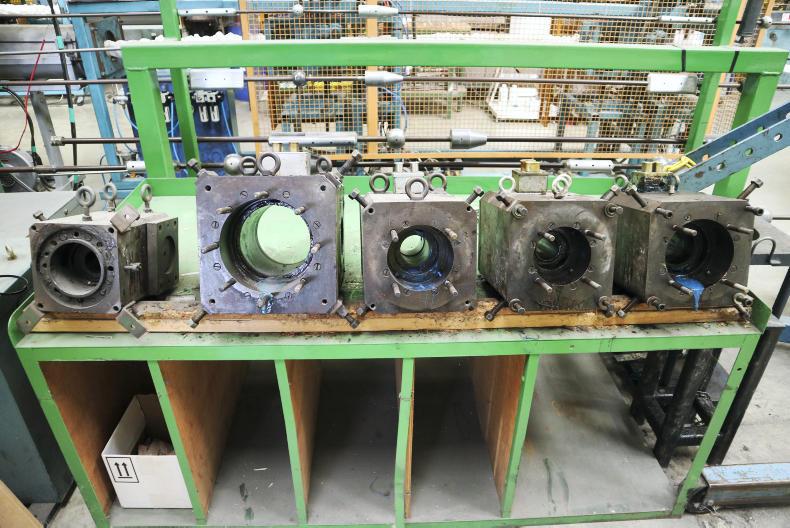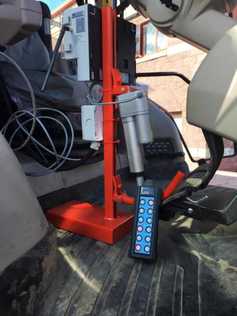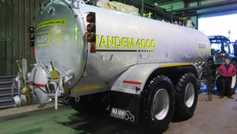Snap-tite hoses is hidden away in an industrial estate in Wexford town. It is the only manufacturer of lay flat hoses in Ireland. These hoses are used extensively in agriculture. The most common use in Ireland is with umbilical slurry spreading systems but the hoses are used in all stages of slurry transport. Snap-tite exports 80% of its product and its main markets are New Zealand and the UK.
The whole manufacturing process is undertaken in-house, with the exception of the raw fibre used for weaving the reinforcing sock in the hose. This fibre is brought in from China in single strands and this is where the process begins.
These strands are very strong; breaking one by hand is impossible. Firstly they are twisted into either six or eight ply twines using machines taken from the textile industry. Once these new multi-ply strings are put on to spools, they are then put on to a weaving machine which weaves these threads into the tube-type shape required for the finished hose. Sizes vary from 1.5in to 6in. The most commonly used sizes in Irish agriculture are 4in and 5in. All Snap-tite hoses are sold through Mastek, its Irish distributor.
The weaving machines are hypnotic to watch as they whirl and spin around a central tube which sets the finished size of the tube being produced.
Once each spool of thread is used, the machine automatically stops and one of the highly skilled operators comes over and joins a new spool seamlessly to the existing thread. This needs to be done correctly as any blemish in the fibre will leave the finished hose susceptible to failure under pressure.
Once the tube has been completed, it is time to create the hose. This is done by through-the-weave injection. The tube is moved through a mandrel and liquefied nitrile rubber is injected into the tube to give a specific thickness of rubber on the inside and outside of the reinforcing tube.
This process is carried out at high temperatures and each length of pipe needs to be normalised afterwards. The hose is laid flat on the ground and pumped full of steam at moderate pressure. This allows the fibres to relax and regain their flexibility after the heat of the production process.
Pipes are made in 200m length so a 200m-plus indoor area is required for the normalisation and also for inspection of the hoses before sale.
If a blemish is found, it is cut out and the shorter lengths are stored in the hope that an order for a non-standard length will come in. On a regular basis pieces are removed from production and tested to destruction. This involves building the pressure up to the point of failure, which is usually at around 600 psi. All of the hoses are certified to work at 200 psi.






 This is a subscriber-only article
This is a subscriber-only article





















SHARING OPTIONS: